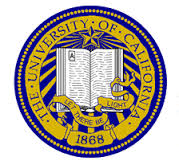It’s no secret, Don has a lot of people worried.
Always the good guy (sort of), the ad man really hit the skids this year. Leave it to Entertainment Weekly to ponder this matter fully, as excerpted below:
“Since the very beginning of Mad Men, Don Draper has seemed doomed.  From the show’s opening-credit sequence, with a silhouetted suit falling helplessly from the Madison Avenue skyline, to this year’s season premiere, which featured Don delving into a copy of Dante’sInferno, the future always seemed bleak for our dapper anti-hero.
From the show’s opening-credit sequence, with a silhouetted suit falling helplessly from the Madison Avenue skyline, to this year’s season premiere, which featured Don delving into a copy of Dante’sInferno, the future always seemed bleak for our dapper anti-hero.
“Oblivious to the fact that he’s always on the wrong side of history, Don began to wither. What seemed cool about him in the beginning — his afternoon drinks and serial womanizing — has devolved to pathetic.
“So where will it end? And more importantly, when? Will the year be 1969 when Mad Menreturns for its seventh and final season? Or 1970? 1973…? Or might Matthew Weiner throw a curve and leap into the future — say 1980 — before flashing-back to the beginning of the previous decade.
“Let’s discuss…
“When we first met Don Draper in season 1, it was March 1960, perhaps the high-water mark of the American Dream after World War II and nearly a decade of Eisenhower prosperity, with the youthful optimism of Kennedy’s Camelot on the horizon. The center was holding. There was order. Life made sense (at least for upper middle-class white men). The story of Don Draper — and to a lesser extent Roger Sterling and the other men at the ad agency — has been the breakdown in society during one of the country’s most turbulent decades: racial strife, feminism, Vietnam, political assassinations, etc.
“Weiner has only once jumped more than a year between Mad Men seasons — season 2 began in February 1962, 15 months after season 1 left off — and the average time-jump is about nine months. So it’s a safe bet that the final season will pick up sometime in 1969 after season 6 left us in front of Don’s childhood abode around Thanksgiving 1968. That makes some logical and symmetrical sense, too, since it wraps up the story of the decade quite neatly.
“But up until last week’s season finale, I thought Weiner, Don, and Mad Men were steering towards a very different end. Don’s downward spiral accelerated every episode, and to me, it all pointed towards Watergate — the ultimate figurative and literal corruption of the country’s soul. There was even a recent episode where a drunken and depressed Don watched a bland Nixon-for-President commercial, and I wondered if the light would go on in Don’s head saying “Hey, I can carve a better winning message for my pal, Dick, than this amateurish crap!”
More at: http://popwatch.ew.com/2013/06/28/mad-men-will-it-really-end-in-1969/










 The prison is
The prison is 




